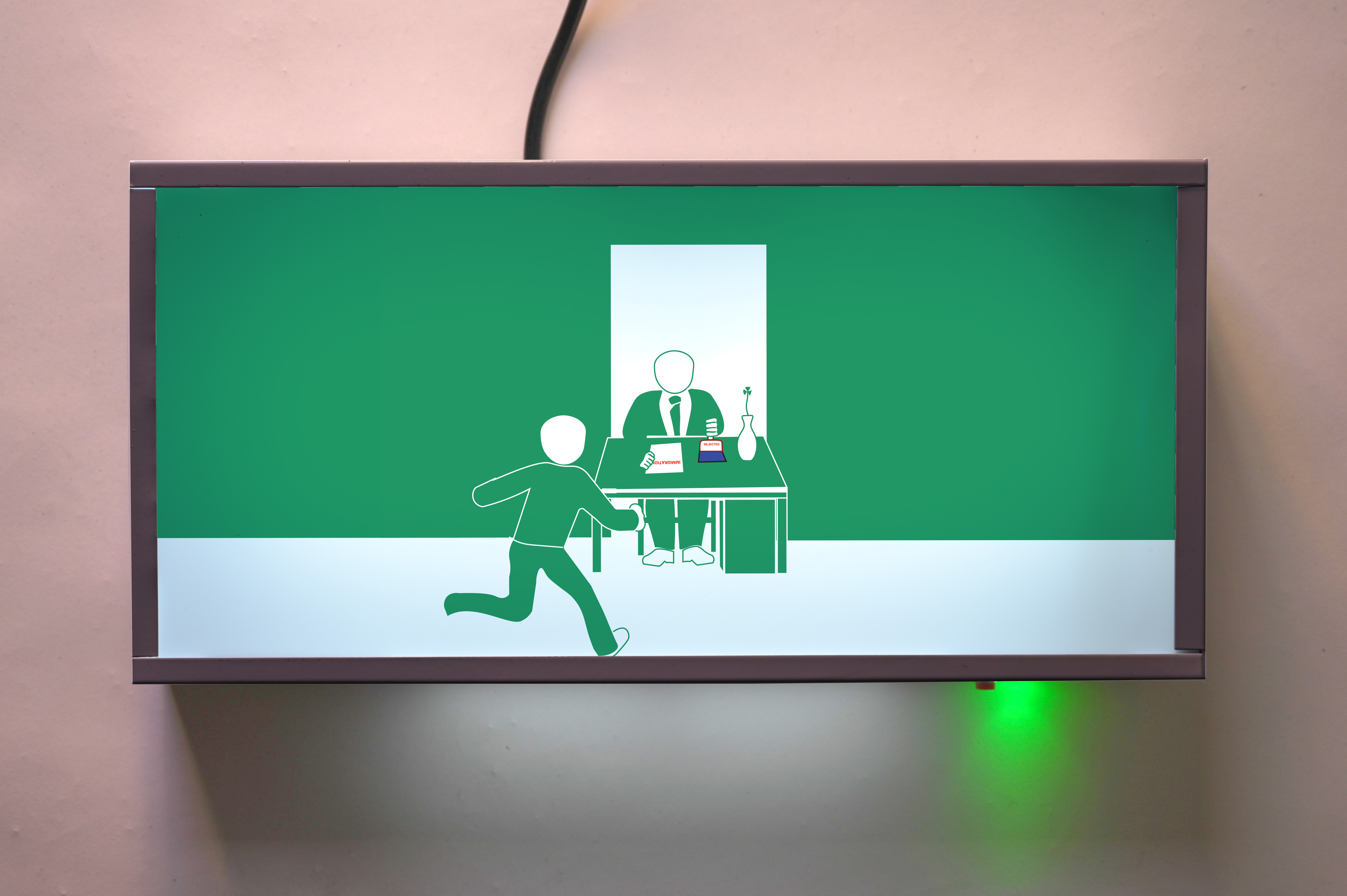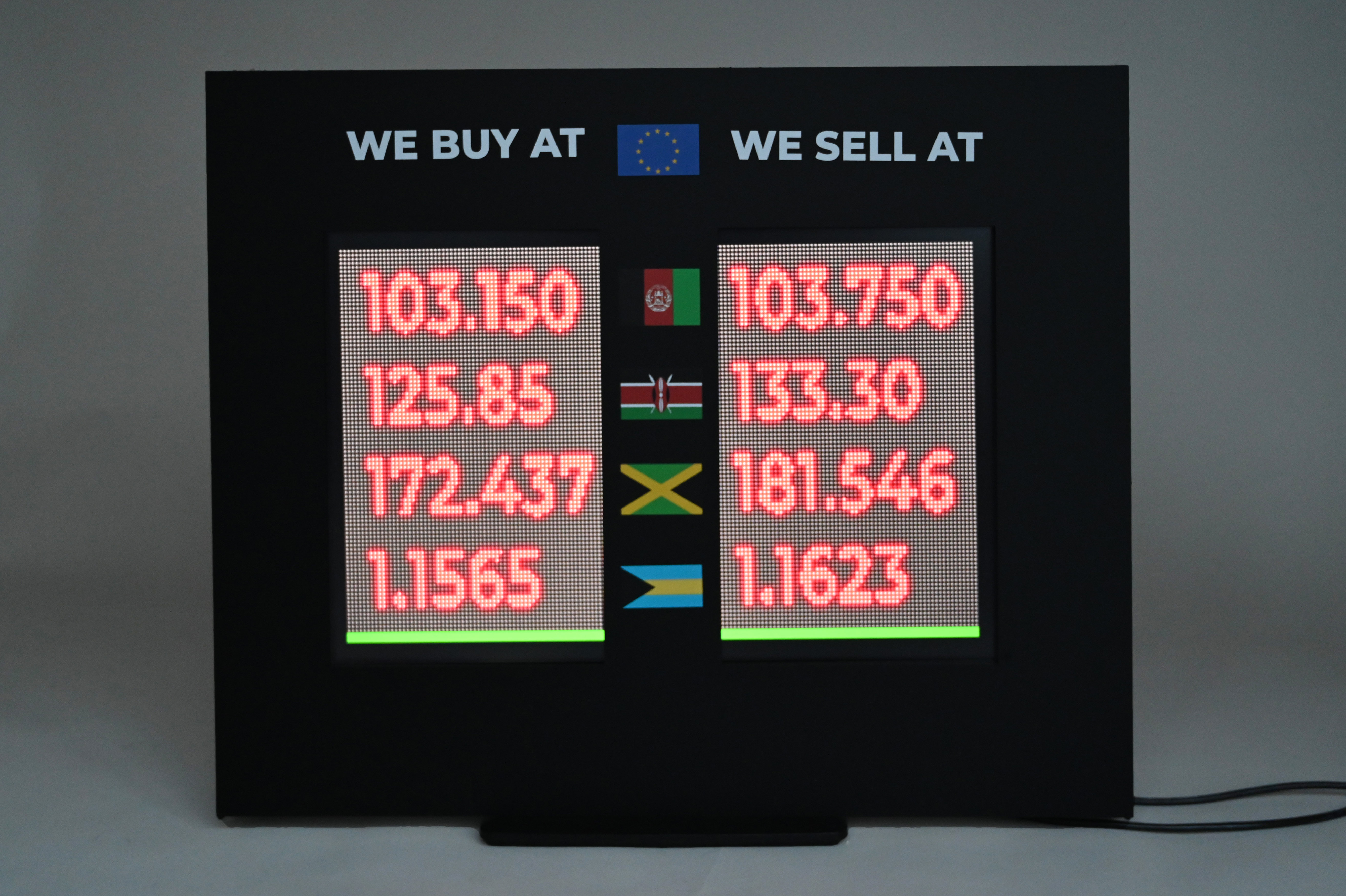ALLES MUSS RAUS
Alles muss raus, above all, considers the contemporary state of internationalism by exploring the influences and the deceptiveness of signs we encounter in the spaces of everyday life.
Applying the Brechtian technique of Umfunktionierung through appropriating and re-contextualizing a selection of such signs, the exhibition underscores their hegemony while challenging their jurisdiction. We call upon the viewers’ sense of familiarity with the imagery we use, and the spaces we invoke, to deliver our message. Throughout this exhibition, we are reversing the established orders of authority.
The exhibition is formatted as a spatial and aesthetic transformation of the Kiezkiosk Open Tiny into a signmaker’s store, in which different displayed signs tell a story of a world whose everyday is shaped by socio-political correlations divergent from those we are familiar with.







The installation Walk Don’t Run manifests from stories of struggle, resistance and triumph in relation to outward movement: exiting, emigrating, escaping. The nearly internationally adopted emergency exit sign here becomes a symbol of our shared realities; its main character, a mere stick figure barely resembling a human, indicates to us how we should behave in the face of danger. How can we universalize it? What is standard about the impossible choice of fleeing one’s home(land) in the face of danger or uncertainty?
Change of Course sets out to examine Power relations through the imagery of the global currency market. If you have ever had the experience of exchanging Euro/Dollar/Pound to a lesser known currency of let’s say Lari or Rupee, you know the rush of privilege that courses through your body with an aftertaste of guilt. This exchange is never fair. The scales come with heavy stones glued to one side. So does language when Afghanistan, Kenia, and Jamaika are used as metaphors based solely on the colors of their flags matching those of German political parties.
Departing from airport signage and its ubiquitously casual usage of the word other, the installation Left Lane Must Turn Left features such a sign on a transporting cart, skewing the established preconceptions of who the “others” are.
The work imagines a passport control booth, equally likely being taken down or put up, where the countries of the Non-Aligned Movement have “right of way.” The Movement, which has since its conception in 1961 morphed from its founding principles, has always featured a most diverse collection of countries — this list, in 2021 arguably as arbitrary as any grouping of states, brings the oft-forgotten Movement into the spotlight, while as well underscoring the hierarchization of freedom of movement.
A stack of shipping boxes blocks the entryway to the signmaker’s shop. Nothing gets in, no one gets out.